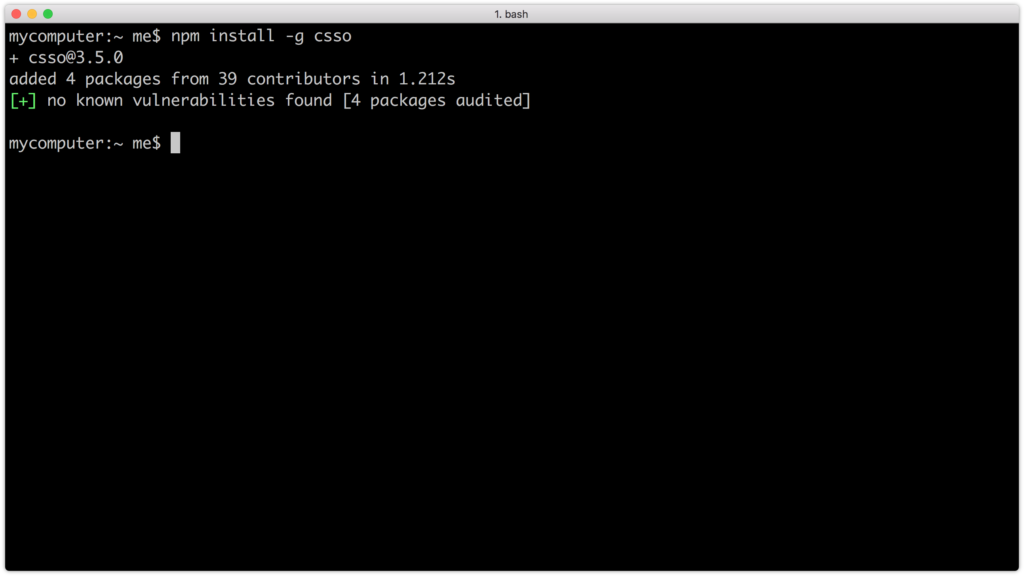The following introduction to CSS minification tools is an extract from Tiffany’s new book, CSS Master, 2nd Edition.
On your road to becoming a CSS master, you’ll need to know how to troubleshoot and optimize your CSS. How do you diagnose and fix rendering problems? How do you ensure that your CSS creates no performance lags for end users? And how do you ensure code quality?
Knowing which tools to use will help you ensure that your front end works well. In this article, we’ll discuss CSS minification.
Developer tools help you find and fix rendering issues, but what about efficiency? Are our file sizes as small as they can be? For that, we need minification tools.
Minification in the context of CSS simply means “removing excess characters.” Consider, for example, this block of code:
h1 {
font: 16px / 1.5 'Helvetica Neue', arial, sans-serif;
width: 80%;
margin: 10px auto 0px;
}
That’s 98 bytes long, including line breaks and spaces. Let’s look at a minified example:
h1{font:16px/1.5 'Helvetica Neue',arial,sans-serif;width:80%;
➥margin:10px auto 0}
Now our CSS is only 80 bytes long—an 18% reduction. Fewer bytes, of course, means faster download times and data transfer savings for you and your users.
In this article, we’ll look at CSS Optimizer, or CSSO, a minification tool that runs on Node.js. To install CSSO, you’ll first have to install Node.js and npm. npm is installed as part of the Node.js installation process, so you’ll only need to install one package.
Using CSSO does require you to be comfortable using the command-line interface. Linux and macOS users can use the Terminal application (Applications > Terminal.app for macOS). If you’re using Windows, utilize the command prompt. Go to the Start or Windows menu and type cmd in the search box.
Installing CSSO
Once you’ve set up Node.js and npm, you can install CSSO. In the command line, type:
npm install -g csso
The -g flag installs CSSO globally so that we can use it from the command line. npm will print a message to your terminal window when installation is complete.
 Installing CSSO with npm using macOS
Installing CSSO with npm using macOS
Now we’re ready to minify our CSS.
Minification with CSSO
To minify CSS files, run the csso command, passing the name of a file as an argument:
csso style.css
This will perform basic compression. CSSO strips unneeded whitespace, removes superfluous semicolons, and deletes comments from your CSS input file.
Once complete, CSSO will print the optimized CSS to standard output, meaning the current terminal or command prompt window. In most cases, however, we’ll want to save that output to a file. To do that, pass a second argument to csso—the name of the minified file. For example, if we wanted to save the minified version of style.css as style.min.css, we’d use the following:
csso style.css style.min.css
By default, CSSO will rearrange parts of your CSS. It will, for example, merge declaration blocks with duplicated selectors and remove some overridden properties. Consider the following CSS:
body {
margin: 20px 30px;
padding: 100px;
margin-left: 0px;
}
h1 {
font: 200 36px / 1.5 sans-serif;
}
h1 {
color: #ff6600;
}
In this snippet, margin-left overrides the earlier margin declaration. We’ve also repeated h1 as a selector for consecutive declaration blocks. After optimization and minification, we end up with this:
body{padding:100px;margin:20px 30px 20px 0}h1{font:200 36px/1.5
➥ sans-serif;color:#f60}
CSSO removed extraneous spaces, line breaks, and semicolons, and shortened #ff6600 to #f60. CSSO also merged the margin and margin-left properties into one declaration (margin: 20px 30px 20px 0) and combined our separate h1 selector blocks into one.
If you’re skeptical of how CSSO will rewrite your CSS, you can disable its restructuring features. Just use the --restructure-off or -off flags. For example, running csso style.css style.min.css -off gives us the following:
body{margin:20px 30px;padding:100px;margin-left:0}h1{font:200 36px/
➥1.5 sans-serif}h1{color:#f60}
Now our CSS is minified, but not optimized. Disabling restructuring will keep your CSS files from being as small as they could be. Avoid disabling restructuring unless you encounter a problem.
Preprocessors and post-processors (such as Sass, Less and PostCSS) offer minification as part of their toolset. However, using CSSO can shave additional bytes from your file sizes.
To read more on CSS debugging and optimization, check out Tiffany’s book, CSS Master, 2nd Edition.
Related articles:
- CSS Debugging and Optimization: Code-quality Tools
- CSS Debugging and Optimization: Browser-based Developer Tools
Frequently Asked Questions about CSSO and CSS Minification
What is CSSO and why is it important in CSS optimization?
CSSO, or CSS Optimizer, is a tool that is used to optimize Cascading Style Sheets (CSS) files. CSS is a language used to describe the look and formatting of a document written in HTML or XML. CSSO works by minimizing the file size of your CSS, which can significantly improve the load time of your website. This is crucial because a faster load time can enhance user experience and potentially improve your website’s ranking on search engines.
How does CSSO work?
CSSO works by analyzing your CSS code and applying various transformations to reduce its size. These transformations include removing unnecessary white spaces and comments, merging identical selectors and properties, and even rewriting property values to shorter forms. The result is a much smaller, optimized CSS file that functions exactly the same as the original.
How do I use CSSO?
CSSO can be used either as a command-line tool or as a Node.js module. To use it as a command-line tool, you need to install it globally using npm (Node Package Manager). Once installed, you can run CSSO on any CSS file using the command ‘csso [input file] [output file]’. To use it as a Node.js module, you need to install it locally in your project and then require it in your script.
What are the benefits of using CSSO over other CSS minifiers?
CSSO not only minimizes CSS files but also performs structural optimization of CSS. This means it can merge identical CSS selectors, remove redundant properties, and even rewrite property values to shorter forms. This results in a much smaller file size compared to other CSS minifiers that only remove white spaces and comments.
Can CSSO break my CSS code?
While CSSO is designed to optimize your CSS without affecting its functionality, there is a small chance that it could break your CSS in some cases. This is usually due to bugs in CSSO or incorrect usage. It’s always a good idea to thoroughly test your website after applying CSSO to ensure everything still works as expected.
How can I debug issues with CSSO?
If you encounter issues with CSSO, you can use the ‘–debug’ option when running it to get more detailed information about what it’s doing. This can help you identify any problematic areas in your CSS. Additionally, you can always revert to your original CSS file if necessary.
Can I use CSSO with other CSS preprocessors like SASS or LESS?
Yes, you can use CSSO with other CSS preprocessors. However, you need to compile your SASS or LESS code to regular CSS first before running it through CSSO.
Is CSSO compatible with all browsers?
CSSO optimizes your CSS code without changing its functionality, so the resulting CSS should be compatible with all browsers that support the original CSS. However, it’s always a good idea to test your website in different browsers after applying CSSO to ensure compatibility.
Can I control the level of optimization in CSSO?
Yes, CSSO provides several options that allow you to control the level of optimization. For example, you can disable structural optimization or preserve comments if needed.
Is CSSO free to use?
Yes, CSSO is an open-source tool, which means it’s free to use. You can find its source code on GitHub and contribute to its development if you wish.
 Tiffany Brown
Tiffany BrownTiffany B. Brown is a freelance web developer and technical writer based in Los Angeles. Brown offers web development and consulting services to larger agencies and small businesses. A former member of the Opera Software developer relations team, Brown is also co-author of SitePoint's JumpStart HTML5 book. She sporadically writes about web development technology on her blog. You can follow her on Twitter at @webinista.







